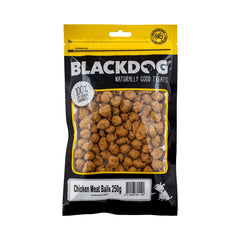A well -behaved dog is what all pet owners like to believe of their dogs. At some stage in our dog's life, they will be challenged by a situation that may see our dog's behaviour become reactive and possibly eventuate in a bite response. Dog muzzles can be a polarising topic in the pet community. We must, however, recognise that for some dogs, a muzzle can be a necessity at any given period in their behavioural journey. A muzzle not only keeps people safe, it will also protect your dog from being declared dangerous should it bite someone.
Types of dog muzzles to suit your dog
There are 2 main types of m uzzles used for dogs. A basket-style muzzle, and a soft muzzle. Both have different applications and are most effective when used appropriately.
uzzles used for dogs. A basket-style muzzle, and a soft muzzle. Both have different applications and are most effective when used appropriately.
Soft Muzzles are designed to wrap around your dog's snout. The best ones are made from a soft mesh or fabric to ensure adequate air flow, even though they are designed to be a snug fit. These muzzles are not to be used for long-term use. They prevent your dog from panting, eating and drinking and we only recommend their use for times such as clipping their nails, a short consultation with your vet, or any other situation where your dog may bite as a result of a situation.
Basket Muzzles are made from a rubber or plastic material. They essentially fit
over the front of your dogs snout and are attached over their head with a comfortable strap. These muzzles allow your dog to pant, bark, eat a treat and drink. These muzzles are a great choice for your dogs comfort and can be worn for extended periods if necessary.
How do I get my dog used to wearing a muzzle?
Acclimatising your dog to wearing a muzzle will provide you with the best outcome. We recommend a training program built about rewarding your dog either with play or a treat gradually. Start by allowing your dog to sniff and smell the muzzle. Leave the muzzle in a 'positive' location, for example, hang it near your dogs lead or place it next to the treat jar. It is important the dog to associate the muzzle with a positive and calm experience so that when they are in an anxious state, this tool will lessen the stress. Begin placing the muzzle on your dog for no more than a few minutes after they are feeling less curious about it. Provide your dog with a treat or a fun game afterwards. Continue this training each day until your dog is comfortable. When the time comes to wear the muzzle, your training will reward both you and your dog!
Other tips for wearing a dog muzzle safely
- Spray the muzzle before use with a calming or anxiety spray
- Never force your dog into a muzzle
- Always make sure that the muzzle is fitted correctly
- Avoid leaving your dog in the muzzle for long periods
- Continue to check your dog's comfort whilst wearing the muzzle and adjust if required
- Keep the muzzle in your regular training program. This is especially useful if you only need to use it for an annual vet check up.
- Consult a dog trainer or animal behaviourist as an investment for your dog








